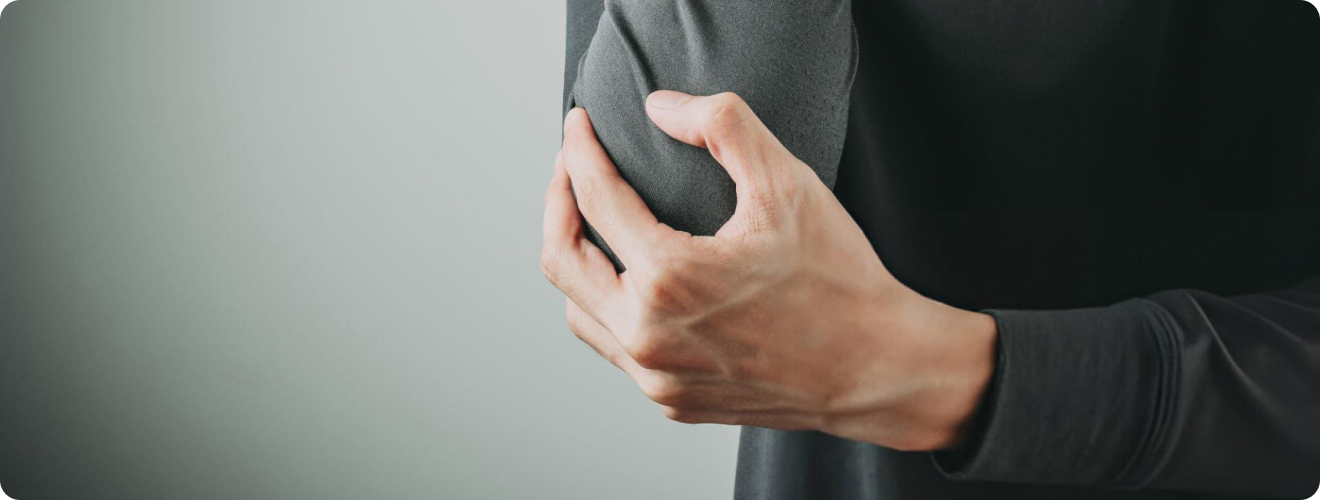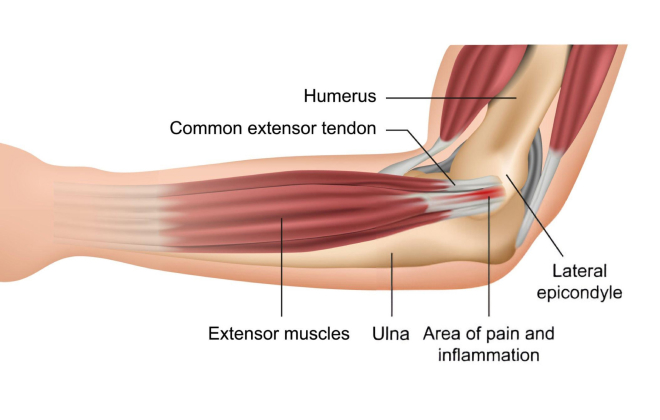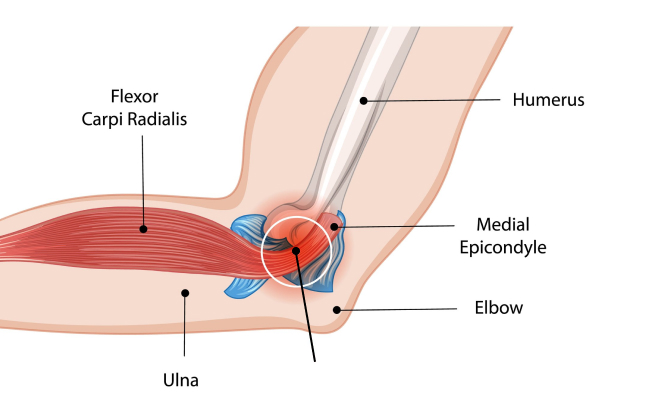


Elbow pain is a common complaint, often dismissed as a minor ache, but it can significantly impact daily activities, from lifting a teacup to swinging a racket. While “tennis elbow” is widely recognised, its lesser-known counterpart, “golfer’s elbow,” often confuses. Despite sharing the common characteristic of elbow discomfort, these two conditions are distinct in their location, underlying causes, and the specific movements aggravating them.
This article will demystify these common elbow conditions, guiding you through their tell-tale signs and how to distinguish them.
The elbow is a sophisticated hinge joint that links the upper arm bone (humerus) with the two forearm bones, the ulna and the radius. It allows for bending and straightening the arm and rotating the forearm. Surrounding this joint are various muscles, tendons, and ligaments that facilitate movement and provide stability.
Importantly, at the lower end of the humerus, there are bony projections on both sides known as epicondyles.
These epicondyles serve as attachment points for the strong tendons of the forearm muscles. Any repetitive strain or overload on these tendons can lead to inflammation and degeneration, resulting in either tennis elbow or golfer’s elbow.
Despite its name, only about 5% of people with tennis elbow play tennis. Tennis elbow is an overuse injury characterised by pain and tenderness on the outside (lateral) of the elbow. It specifically involves inflammation and microscopic tears in the tendons that attach the forearm extensor muscles (muscles that straighten your wrist and fingers) to the lateral epicondyle.
This condition develops from repetitive wrist and arm motions, particularly those involving extension and supination (rotating the forearm outwards). Activities that frequently cause it include:

Like its counterpart, the golfer’s elbow is not exclusive to golfers. A golfer’s elbow is an overuse injury causing pain and tenderness on the inside (medial) of the elbow. It affects the tendons of the forearm flexor muscles (muscles that bend your wrist and fingers) that attach to the medial epicondyle.
This condition typically arises from repetitive wrist flexion (bending the wrist downwards) pronation (rotating the forearm inwards), and strong gripping. Common activities that can lead to it include:

The most critical difference lies in the location of the pain and the specific movements that exacerbate it.
Think of it this way:
A simple test to help differentiate at home:
While self-assessment offers initial clues, a definitive diagnosis for elbow conditions like tennis or golfer’s elbow should always come from a healthcare professional, such as a GP, physiotherapist, or orthopaedic specialist. Diagnosis typically involves taking a detailed medical history about your symptoms, activities, and onset of pain, followed by a physical examination to assess pain location, tenderness, strength, and specific tests to reproduce symptoms. Imaging, like X-rays, is usually not required unless a fracture is suspected, with MRI scans rarely used to confirm tendon degeneration.
Treatment principles for both conditions are generally similar, focusing on rest from aggravating activities, applying ice to reduce pain and inflammation, using over-the-counter NSAIDs for pain relief, and employing bracing or strapping to alleviate tendon tension. Physiotherapy is crucial, involving tailored exercises, massage, and ergonomic advice to improve technique and prevent recurrence. Injections, such as corticosteroids or newer Platelet-Rich Plasma (PRP), can offer temporary relief but are not long-term solutions. Surgery is a rare last resort, considered only for severe, chronic cases unresponsive to conservative management.
Elbow pain can be debilitating, but distinguishing between tennis elbow and golfer’s elbow is the first critical step toward effective management. While both are overuse injuries affecting the elbow’s tendons, their specific locations – the outer (lateral) side for tennis elbow and the inner (medial) side for golfer’s elbow – dictate their unique symptom patterns and the movements that provoke pain. By understanding these core differences, you can better communicate your symptoms to a healthcare professional, ensuring an accurate diagnosis and a tailored treatment plan. Remember, early intervention, combined with dedicated physiotherapy and adherence to proper technique in your activities, is key to overcoming these conditions and recovering stronger for future pursuits, whether on the court, the green, or in everyday life.
Sources:
Spread the love, follow us on our social media channels